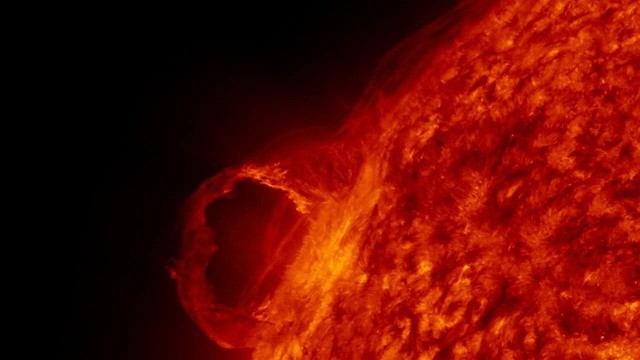On late Thursday, at 7:57 p.m. EDT on January 5, a large and unstable sunspot that might very well flare up again soon caused a strong solar flare to burst on the surface of the Sun. NASA's Solar Dynamics Observatory, which constantly monitors the Sun, was able to capture an image of the solar event.
The Space Weather and Prediction Center (SPWC) of the National Oceanic and Atmospheric Administration (NOAA) identified the solar flare as an X1.2 class. The most intense type of flares, known as X flares, have the ability to harm satellites, communications technology, and even the electrical grid by affecting Earth's magnetic field and causing geomagnetic storms.

Sun Released Colossal X-class Solar Flare From Previously Hidden Unstable Sunspot That Is Now Facing Earth
More Solar Flares To Come
Despite being an X1 class flare, CNet reported that it was still at the low end of the X-scale. That is why there is no immediate damage reported from the blast just yet, except for the short-wave radio blackout in some parts of Australia and the South Pacific.
The blackout is said to be due to the energized blast of the solar flare that traveled toward Earth at the speed of light, reaching the planet in eight minutes. But it was still a brief solar flare.
Former NASA astronomer Tony Phillips at Spaceweather.com explained that there surely is more in the sunspot's arsenal given its size and apparent complexity. He said that there is a good chance the explosions will continue in the coming days, with at least a 10% chance of more X flares as per NOAA's SWPC.
Strong coronal mass ejections (CMEs) of hot plasma can be launched in the direction of Earth, but they do so at considerably slower rates, requiring a day or more to reach us.
Strong CMEs can cause infrastructure damage as well as the previously noted brilliant auroral displays at higher latitudes when they directly strike Earth. Surprisingly, there are no reports of a CME following Thursday's flare have been made as of yet. The week before the large solar flare, the sunspot has been blasting powerful flares and CMEs off the far side of the Sun.
More Solar Activity To Be Expected
The once-hidden unstable sunspot was cataloged as AR3182, which is rotating into the direct line of sight from Earth, and poses future harm as possible CMEs may be aimed right at the planet as per Space.com.
Experts may have not observed CMEs emerging from the area after the massive solar flare, solar activity is notably on the rise as part of the solar cycle 25, which is predicted to peak in 2025.
The NASA Sun & Space Twitter account tweeted how busy is the first week of the year after observing five solar flares, and 26 CMEs, although there are no geomagnetic storms. They shared a video of the Sun's activity over the past week from the Solar Dynamic Observatory.
To know about upcoming solar flares and keep up with the latest space weather, NOAA's SPWC has the information from their weather satellites that perch over the eastern and western US.
RELATED ARTICLE: Big X-Class Solar Flare May Be Building in the Dangerous Sunspot Pointing to Earth
Check out more news and information on Solar Flare in Science Times.














